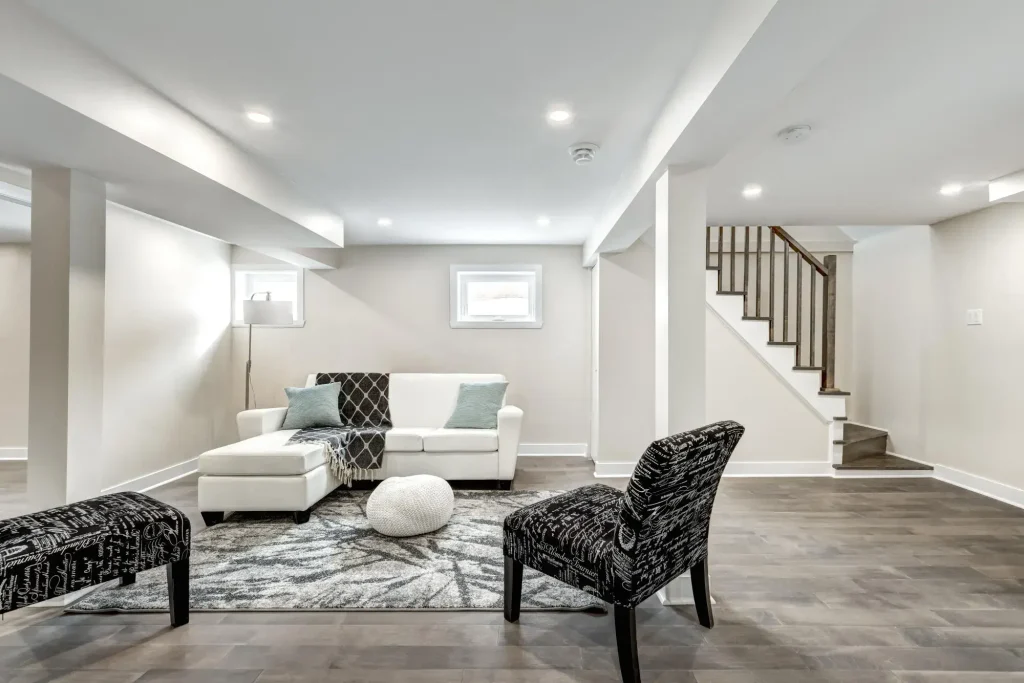Home for Sale: Expert Guide to Selling Your House Fast & Profitably in 2025

Selling a home can be one of the most rewarding — and nerve-wracking — experiences of your life. Whether you’re relocating, downsizing, or simply looking to cash in on a hot market, you want to make sure you sell quickly and at the best price possible. With 2025 bringing new technologies, shifting buyer behaviors, and evolving real estate practices, understanding how to properly prepare, list, and market your property is more crucial than ever.
In this mega guide, we’ll walk you through every single step — from understanding market trends to closing the deal. Buckle up, because by the end of this, you’ll have everything you need to sell your home like a pro.
Understanding the Real Estate Market in 2025
Key Trends Shaping the Market
The real estate landscape has undergone significant changes in recent years, and 2025 is no exception. With mortgage rates stabilizing after years of fluctuation, buyer confidence is on the rise. One of the most notable trends is the increased demand for suburban and semi-urban homes with more space, especially as hybrid work remains popular.
Technology continues to play a major role — virtual tours, 3D walk-throughs, and AI-driven listings are not just “nice-to-haves” anymore; they’re expected. The demographic shift is also notable, with Millennials and Gen Z becoming dominant homebuyers. These groups value energy efficiency, smart home features, and transparency more than ever before.
Sellers need to embrace this reality. If your home isn’t keeping up with these buyer demands, you may be losing out before anyone even steps through the door.
Why 2025 is a Unique Year to Sell
You might be wondering, “Is now really a good time to sell?” The short answer is yes — for several compelling reasons. First, inventory in many areas remains low, which means less competition. Second, buyers are more financially prepared, with improved access to lending programs and reduced down payment requirements.
On top of that, many homeowners have seen a significant appreciation in property values over the past few years. Selling in 2025 could mean walking away with a handsome profit — assuming you play your cards right. From a seasonal standpoint, spring and early summer remain prime selling seasons, but even off-season sales are picking up thanks to online listings being active year-round.
Preparing Your Home for Sale
Decluttering and Deep Cleaning
First impressions are everything. When potential buyers walk into your home, they should be able to imagine their life there — not be distracted by clutter or grime. Start by decluttering every room. This means removing personal items, excess furniture, and anything that doesn’t contribute to a clean, spacious feel.
Once you’ve decluttered, it’s time for a serious deep clean. And no, we don’t just mean a quick mop and dusting. We’re talking baseboards, window sills, ceiling fans, grout lines — all of it. Pay special attention to kitchens and bathrooms. These areas can make or break a sale.
If you can afford it, hire a professional cleaning service. It’s a small investment that can yield a big return by creating a welcoming, spotless environment that appeals to buyers from the first second they step in.
Home Repairs and Renovations That Pay Off
Not all repairs are created equal. While you may not need a full renovation, addressing key issues can significantly impact your home’s marketability and value. Focus on “high ROI” areas like kitchens, bathrooms, and flooring.
Fix that leaky faucet, repair damaged walls, update old light fixtures, and ensure all appliances are functioning properly. Small updates — such as repainting walls in neutral colors, replacing dated cabinet hardware, or upgrading to smart thermostats — can modernize your home without draining your wallet.
Before you start any upgrades, though, take a walk through your home as if you’re seeing it for the first time. What stands out — for better or worse? If something bothers you, chances are it’ll bother potential buyers too.
Curb Appeal: Your Home’s First Impression
Your front yard and entryway set the tone for the entire showing. A well-manicured lawn, freshly painted front door, clean windows, and inviting porch can make buyers fall in love before they even walk in.
Don’t underestimate simple touches like planting flowers, replacing your doormat, or installing outdoor lighting. These small enhancements help create an emotional connection and build anticipation before the buyer even sets foot inside your home.
Pricing It Right from Day One
How to Research Comparable Sales
Setting the right price from the start is critical. Price it too high, and you scare buyers away. Too low, and you leave money on the table. The sweet spot? Somewhere right in between, based on hard data and market conditions.
Start by researching comparable sales — or “comps” — in your area. Look for homes similar in size, style, condition, and location that sold in the past 3 to 6 months. Pay attention to price per square foot, how long the homes were on the market, and whether they received multiple offers.
This research helps anchor your expectations and keeps you from pricing emotionally — a mistake many sellers make.
The Dangers of Overpricing
Overpricing is one of the fastest ways to sabotage your home sale. While it might be tempting to “test the market,” buyers are savvier than ever and have access to the same comps you do. If your price is too high, they’ll skip your listing entirely or use it to justify a lower offer on a similar, more reasonably priced property.
Worse, homes that sit on the market too long can become stigmatized. Buyers start to wonder what’s wrong, and you may end up having to drop the price below market value just to generate interest.
Working with Real Estate Professionals
A knowledgeable real estate agent can help you nail the perfect price point. They’ll provide a Comparative Market Analysis (CMA), factor in hyper-local trends, and help you avoid common pricing pitfalls. Think of them as your pricing GPS — guiding you away from dead ends and straight to your destination: a successful sale.

The Power of Home Staging
What is Home Staging and Why It Works
Home staging isn’t just fluff — it’s a proven strategy that helps homes sell faster and often for more money. At its core, staging is all about presenting your home in the best possible light. It highlights your home’s strengths, downplays its weaknesses, and makes it appeal to the widest pool of buyers.
Buyers often make a decision within the first few minutes of entering a home. Staging creates that instant connection. It can be as simple as rearranging furniture to improve flow, adding fresh flowers to brighten up a space, or using neutral tones to let buyers imagine their own style.
Studies show staged homes sell 73% faster than non-staged ones and can increase the sale price by up to 10%. That’s a lot of bang for your buck, especially considering how affordable some staging techniques can be.
DIY Staging Tips for Maximum Impact
Want to stage your home without hiring a pro? No problem. There are plenty of impactful DIY strategies:
- Depersonalize: Take down personal photos, awards, and any item that screams “you.” Let buyers picture their life there.
- Neutralize Colors: Bold paint colors might suit your style, but they can be off-putting to buyers. Stick with whites, beiges, or soft grays.
- Maximize Light: Open curtains, clean windows, and add lamps to brighten dark corners. Bright homes feel more spacious.
- Highlight Functionality: Turn awkward spaces into something usable — a reading nook, a mini office, or a coffee corner.
- Add Finishing Touches: Think fresh towels in the bathroom, a bowl of fruit on the kitchen counter, or cozy throws on the couch.
A little effort goes a long way in making your home feel polished and inviting.
Hiring a Professional Stager – Is It Worth It?
While DIY staging works, there are cases where bringing in a pro makes sense. Professional stagers understand design, layout, and buyer psychology. They bring in furniture, décor, and a fresh eye to transform your space into something truly market-ready.
It can cost anywhere from $500 to $2,500 depending on your home’s size and condition. That might sound steep, but consider this: a well-staged home often receives more offers, faster — and sometimes even sparks bidding wars. That alone can cover the investment and then some.
So, if your budget allows and you’re in a competitive market, hiring a pro stager might just be the secret weapon you didn’t know you needed.
Creating an Irresistible Listing
Writing a Magnetic Property Description
Your listing description is your home’s first impression online, and trust us — it matters. A boring or vague description will get skipped, while a well-written one can drive clicks, calls, and showings.
Start with the wow factor. What makes your home special? Is it the newly renovated kitchen? The lush backyard? The panoramic view? Lead with that. Then move into the details — square footage, number of bedrooms and bathrooms, standout features like hardwood floors or smart-home integrations.
Use emotive language, but keep it honest. Phrases like “sun-drenched living room” or “spa-like master bath” evoke feelings and paint a picture. But don’t oversell — buyers will quickly pick up on exaggerations during a showing.
And don’t forget keywords. Include terms buyers are searching for like “home office,” “updated kitchen,” “move-in ready,” and of course, your location.
Professional Photography and Videography
Your iPhone photos won’t cut it here. Today’s buyers shop online first, and listings with professional photos get 118% more views and sell 32% faster. Why? Because high-quality images make your home look its best, showcasing lighting, layout, and detail.
A good real estate photographer knows how to capture each room from its best angle, use wide lenses to emphasize space, and edit photos to pop without looking fake.
Consider going a step further with professional video. A 1-2 minute highlight reel can dramatically boost engagement and offer a more immersive preview. Some sellers even include aerial drone footage for properties with large lots or scenic surroundings.
Leveraging Virtual Tours in 2025
Virtual tours have gone from optional to essential — especially in 2025. They allow buyers to “walk through” your home online, 24/7, from anywhere in the world.
Use 3D scanning tools like Matterport to create interactive, self-guided experiences. This is especially helpful for out-of-town buyers or busy professionals. Virtual tours filter serious buyers from window-shoppers, saving everyone time and effort.
Plus, it signals to buyers that you’re serious and up-to-date — a small detail that makes a big impact.
Marketing Your Home Like a Pro
Listing Platforms That Actually Work
Posting on just one platform? That’s a rookie move. To get serious visibility, you need a multi-platform approach. Here are the must-use sites in 2025:
- Zillow and Realtor.com: These still dominate in terms of traffic and buyer interest.
- Redfin and Trulia: Great for analytics-driven buyers.
- Local MLS (Multiple Listing Service): The go-to database for real estate agents and serious buyers.
- Craigslist & Facebook Marketplace: For budget-minded or local buyers who may not be browsing Zillow.
Each platform has its own format, so customize your listing — don’t just copy-paste. Tailor the headline, photo order, and call-to-action to suit the platform and audience.
Social Media & Paid Ads Strategy
Want to really level up? Take your listing to social media. Facebook, Instagram, and TikTok aren’t just for selfies — they’re powerful real estate tools. Use them to post teaser videos, walkthroughs, or before-and-after shots.
Boost your posts to reach a wider audience. Target by location, income, age group, and interests. A $100 Facebook ad campaign can put your home in front of thousands of targeted eyes.
Pro tip: Ask your agent if they run social campaigns. Some include it in their package — others offer it as an upgrade.
Hosting Open Houses and Virtual Showings
Open houses still work — when done right. Set the mood with soft music, light refreshments, and printed brochures. Make sure the home smells pleasant (think fresh cookies, not air freshener overload) and keep the lights on to create a warm, welcoming vibe.
And for the tech-savvy crowd? Offer live virtual open houses on Facebook or Zoom. You’ll capture buyers who can’t attend in person and show them you’re flexible and proactive.

Choosing the Right Real Estate Agent
What to Look for in a Realtor
Not all agents are created equal. You need someone who knows your market inside and out, communicates well, and has a proven track record. Look for:
- Local expertise: Do they know your neighborhood like the back of their hand?
- Marketing skills: Do they offer pro photography, staging advice, and digital campaigns?
- Availability: Will they respond to your texts at 9 p.m.? They should.
- Reviews and references: What do past clients say? Testimonials matter.
This is your biggest asset — don’t settle for someone who treats it like just another transaction.
Interviewing Agents the Smart Way
You’re the boss here. Interview at least 3 agents before committing. Ask smart questions like:
- How many homes have you sold in this area in the last 12 months?
- What’s your average list-to-sale price ratio?
- How will you market my home?
- Can I cancel our agreement if I’m not satisfied?
Gauge their enthusiasm, knowledge, and communication style. You want someone who’s not just qualified — but also motivated to get your home sold fast.
Commission Negotiations Tips
Commissions are typically 5–6%, but they’re not set in stone. Don’t be afraid to negotiate — especially if your home is move-in ready or in a hot market.
Some agents offer flexible commissions based on selling price, or discounts for dual agency (where they represent both buyer and seller). Just make sure any agreement is in writing, and be clear on what’s included in their fee — photography, staging, ads, etc.

Understanding the Legal Process
Key Documents You’ll Need to Sell Your Home
Selling a home isn’t just about pricing and staging — there’s a whole stack of paperwork involved. Having these documents ready ahead of time makes the process smoother and builds buyer confidence. Here’s what you’ll typically need:
- Property Deed: Proves you legally own the property.
- Title Report: Shows the home’s ownership history and any existing liens.
- Homeowners Association (HOA) Documents: If applicable, include bylaws, fees, and contact info.
- Tax Records: Typically, the last two years of property taxes.
- Mortgage Statement: Shows your remaining balance if you still owe on the home.
- Inspection Reports or Repairs: Disclose any recent fixes or problems identified.
Gathering these upfront ensures transparency, reduces delays during escrow, and helps prevent last-minute deal breakers.
Disclosure Requirements for Sellers
Every seller has a legal duty to disclose known issues with the home. These disclosures vary by state, but common ones include:
- Roof leaks or foundation issues
- Past pest infestations or mold
- History of flooding or water damage
- Renovations or additions not up to code
- Disputes with neighbors or boundary issues
Failure to disclose can result in lawsuits or the buyer backing out entirely — even after contracts are signed. Honesty is your best friend here. A transparent approach builds trust and reduces risk.
Hiring a Real Estate Attorney – When and Why
While not always required, hiring a real estate attorney is often a smart move. They help you navigate contracts, protect your interests, and ensure all legal requirements are met. Consider bringing one in if:
- You’re selling without an agent (FSBO).
- There are complicated title issues.
- You’re in a state that mandates attorney involvement (like New York or Georgia).
- You’re dealing with probate or inherited property.
Attorneys typically charge a flat fee ($500–$1,500) or an hourly rate. It’s a small price for peace of mind during a major financial transaction.
Navigating Offers and Negotiations
Evaluating and Comparing Multiple Offers
So, you’ve got offers rolling in — now what? It’s tempting to grab the highest number, but don’t rush. A strong offer isn’t just about price. Here are key factors to consider:
- Financing type: Cash offers are king. No loan = fewer complications.
- Contingencies: Fewer contingencies mean a smoother deal. Watch for inspection, appraisal, and financing contingencies.
- Closing timeline: Do you need a quick sale? A flexible timeline? Match offers to your goals.
- Earnest money deposit: A higher deposit shows the buyer is serious.
- Buyer’s reputation: If they’re working with a reputable agent or lender, that’s a good sign.
Create a simple spreadsheet to compare all terms — not just the headline number. This makes it easier to choose the best overall package.
How to Handle Lowball Offers Gracefully
Lowball offers sting, but don’t take them personally. Buyers are looking for a deal — just like you did when you bought the home.
Here’s how to respond like a pro:
- Stay calm. Don’t react emotionally or shut them down immediately.
- Counter strategically. Maybe come down a little — just enough to show good faith.
- Ask questions. What’s their reasoning? Are they factoring in repairs or market data?
- Add value. Offer to leave appliances, cover closing costs, or provide a home warranty.
Sometimes a lowball offer is just a conversation starter. You’d be surprised how many end up turning into full-price sales with the right negotiation.
Crafting the Perfect Counteroffer
A counteroffer is your chance to steer the deal back in your favor. But it’s more than just changing the number — it’s about structuring terms that benefit you.
Here’s how to write a smart counter:
- Raise or adjust the price (if necessary).
- Shorten or remove unnecessary contingencies.
- Adjust closing dates to fit your move-out schedule.
- Add conditions — like keeping certain fixtures or excluding personal items.
Always get it in writing and respond quickly. Delays can make buyers nervous or cause them to walk away. Your agent will help you strike the right balance between assertive and flexible.
The Closing Process Explained
What Happens During Escrow
Escrow is the period when all the pieces come together. It typically lasts 30–60 days and involves:
- Finalizing buyer financing
- Conducting inspections and appraisals
- Handling title searches and insurance
- Preparing closing paperwork
During escrow, an impartial third party (the escrow officer) holds all funds and documents until everything is complete. Think of them as the neutral referee who ensures neither side gets burned.
Make sure you respond to requests quickly — delays in paperwork or inspections can derail the timeline.
Final Walkthrough and Closing Day Expectations
The buyer gets one last walkthrough before closing — their chance to make sure the home is in agreed-upon condition. Here’s what they’ll check:
- All agreed repairs are completed
- No new damage since the inspection
- Included items (appliances, fixtures) are still there
Once that’s done, it’s closing time! Expect to:
- Sign a stack of documents (digital closings are more common now)
- Hand over keys and garage remotes
- Transfer utilities out of your name
- Celebrate — you did it!
Closing Costs: What Sellers Pay
Yes, buyers cover most costs, but sellers aren’t off the hook. Expect to pay:
- Agent commission: Typically 5–6% of the sale price.
- Title insurance: Usually the seller covers this.
- Escrow fees: Often split between buyer and seller.
- Outstanding mortgage balance
- Transfer taxes (in some states)
Total costs usually run 6–10% of the home’s price. Your net proceeds = sale price minus all these costs.
Life After Selling Your Home
Planning Your Next Move
Where are you headed next? Whether you’re upsizing, downsizing, or relocating to a new state, planning ahead will ease the transition.
If you haven’t bought your next home yet, consider temporary housing or a rent-back agreement. This allows you to stay in your home for a short period post-sale — buying you time to find your next perfect place.
Already have your next home? Great! Coordinate closing dates, moving services, and packing schedules carefully. Label boxes by room, notify utilities, and forward your mail.
Tax Implications and Capital Gains
Good news — many sellers don’t owe capital gains tax thanks to the IRS exclusion:
- You can exclude up to $250,000 in profit if single, or $500,000 if married.
- You must have owned and lived in the home for 2 of the last 5 years.
If your profit exceeds those amounts, you’ll owe capital gains tax — typically 15%–20%. Talk to a tax professional to understand your liability and plan accordingly.
Emotional Impact of Selling Your Home
Selling your home is a big financial event — but it’s also an emotional one. You’ve likely made memories, raised families, or celebrated milestones in those walls.
It’s okay to feel a mix of excitement, sadness, and even anxiety. Give yourself grace, reflect on the journey, and look forward to the next chapter.
Home is where the heart is — and there’s another one waiting just around the corner.
Conclusion
Selling a home isn’t just about putting a sign in the yard — it’s a journey filled with preparation, strategy, and a touch of emotional grit. From pricing it right to staging it like a pro, from listing it smart to navigating the final paperwork, every step matters.
Whether you’re moving on to your dream home, chasing a new job, or downsizing for simplicity, remember this: a well-sold home opens the door to your next adventure. So take the time, do it right, and make the most of it.




